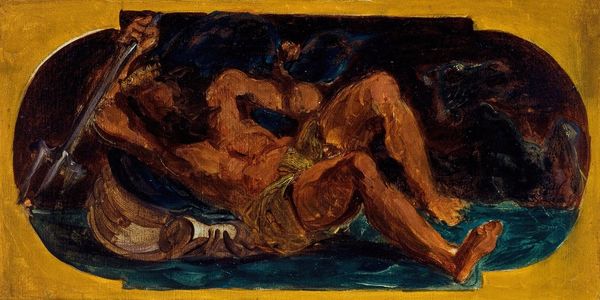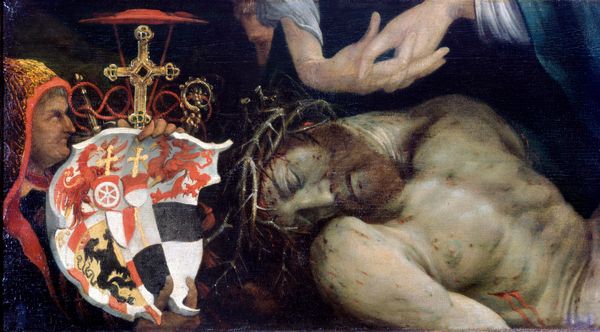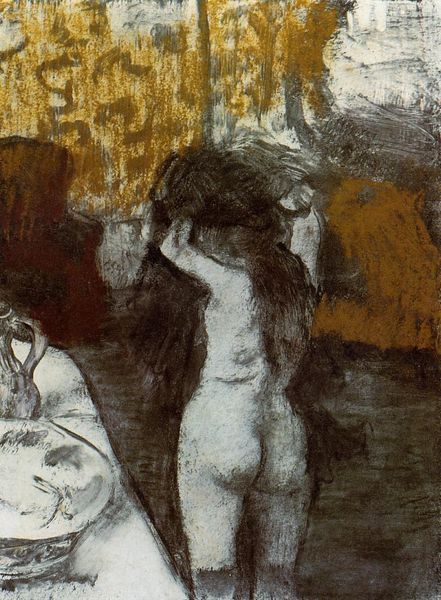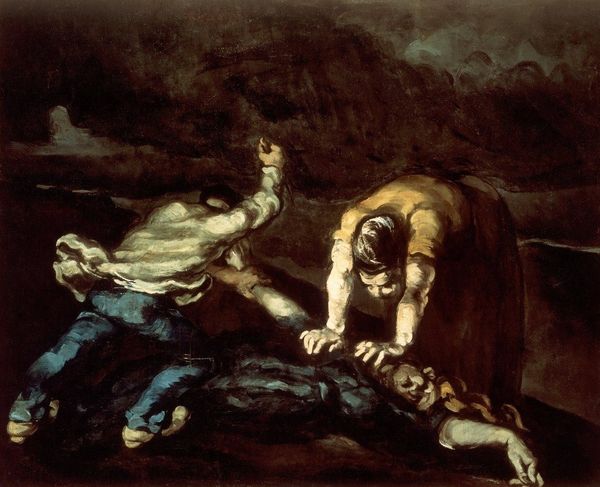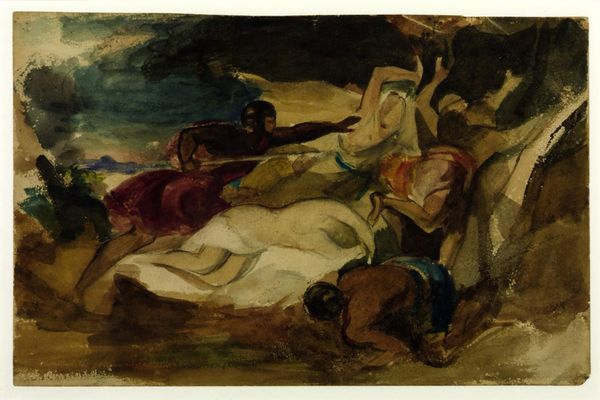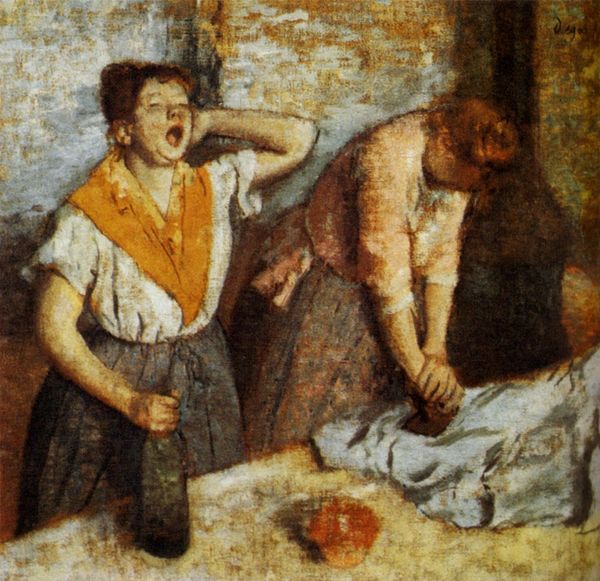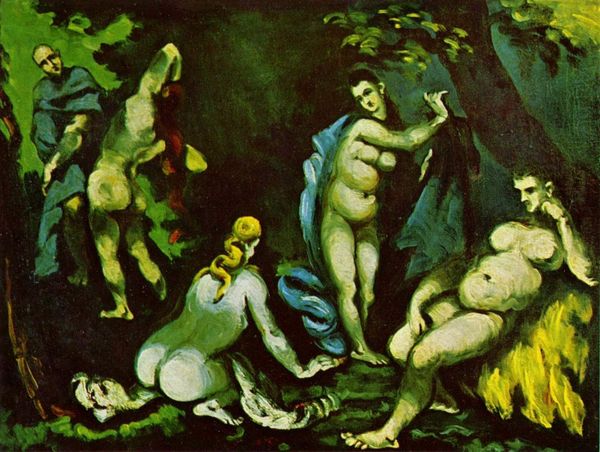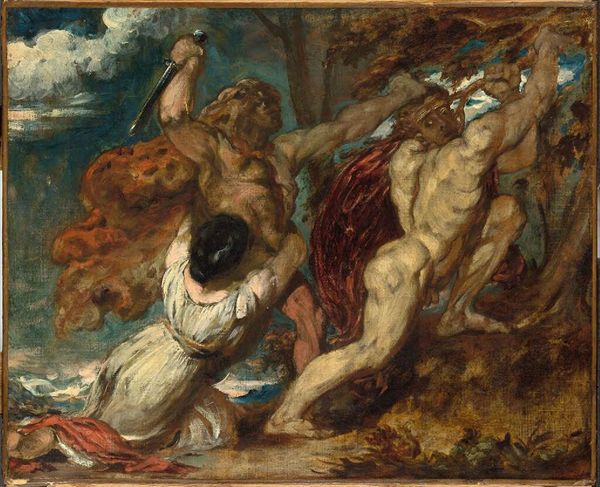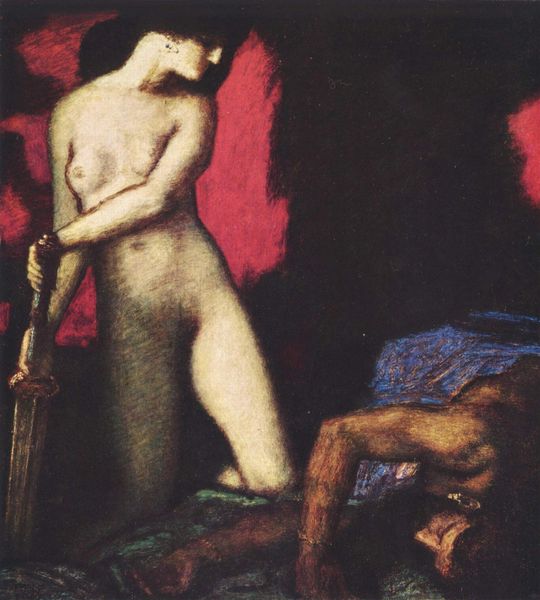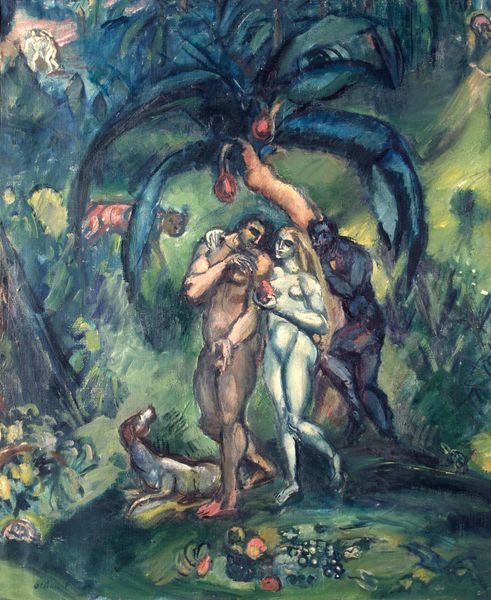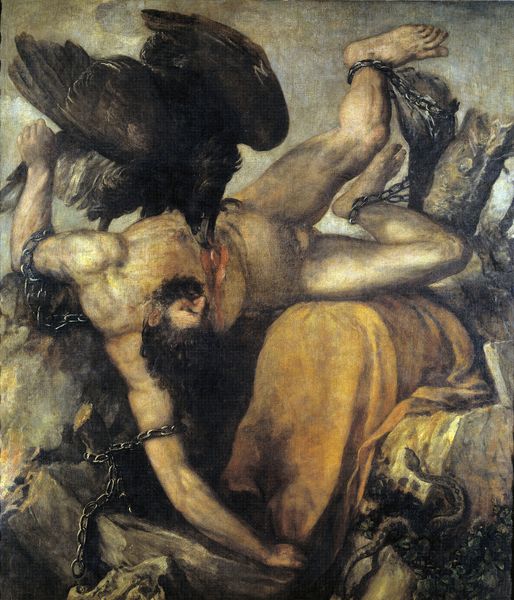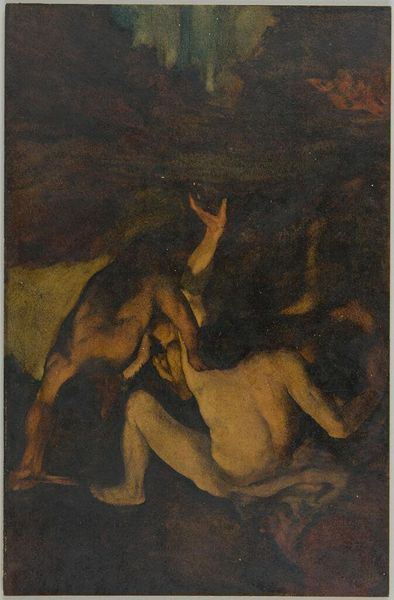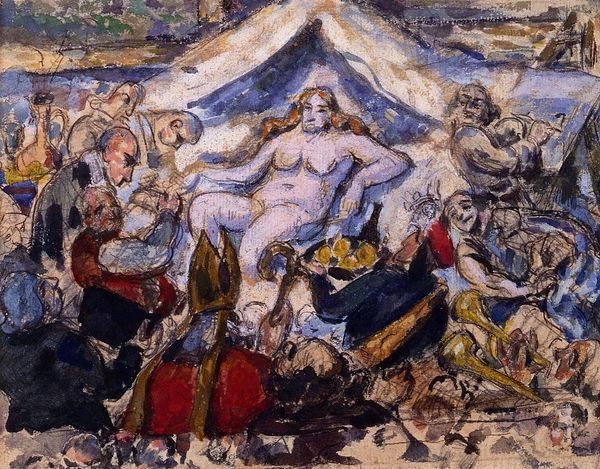
Copyright: Public domain
Curator: Paul Cézanne's 1870 canvas, “A Modern Olympia,” certainly presents a unique visual and thematic structure, wouldn’t you agree? Editor: Yes, initially it hits me with this overwhelming feeling of unease, like walking into a room where something significant, possibly scandalous, is about to unfold. Curator: Indeed. Cézanne deliberately destabilizes pictorial space, employing what we might term a ‘geometricisation’ of form and an ambiguous perspectival structure. The scene is spatially compressed. Note the foregrounded dark figure—a viewer proxy perhaps? —seemingly encroaching on Olympia's personal space. Editor: Absolutely, it is awkward and voyeuristic, as the viewer is caught between observing and participating. I’m fixated by that crouching figure. There's a darkness in those thick, almost violent brushstrokes. It contrasts with the rest of the scene. What do you read there? Curator: Its presence invokes Manet’s original, whilst simultaneously dismantling its smooth academic finish. Cézanne adopts the role of a 'corrective' artist, one attempting to redeem and redefine academic traditions from within. Consider the influence of Pissarro and Impressionism on his palette here, creating this luminous yet somewhat disquieting atmosphere. Editor: Yes, that tension between light and darkness! Like a theatrical staging of a dream, unsettling but strangely beautiful. I can't help but feel this hints at social anxieties surrounding class and gender, the changing roles and expectations bubbling beneath the surface. The whole scene, to me, is vibrant with a kind of pre-revolutionary fervor. Curator: An astute reading. The subject matter itself is highly charged. It offers commentary not only on artistic conventions but also the evolving dynamics between artist, model, and audience. Note also the rather fragmented background elements: the distorted courtesan figure and the somewhat awkwardly positioned still life. Editor: Exactly, as if it all just sort of exploded, the paint hurled in passion onto the canvas. For all that formal analysis, it breathes emotion, doesn't it? Almost vibrates with the messy complexities of real human encounters. Curator: It’s that potent juxtaposition of a classical theme and revolutionary artistic treatment which cements this painting's position in art history. It invites discourse on form, content, and, crucially, perception itself. Editor: Yes. Seeing it afresh with you helps me appreciate Cézanne’s daring subversion, not just as a technical exercise but as an embodied expression.
Comments
No comments
Be the first to comment and join the conversation on the ultimate creative platform.

